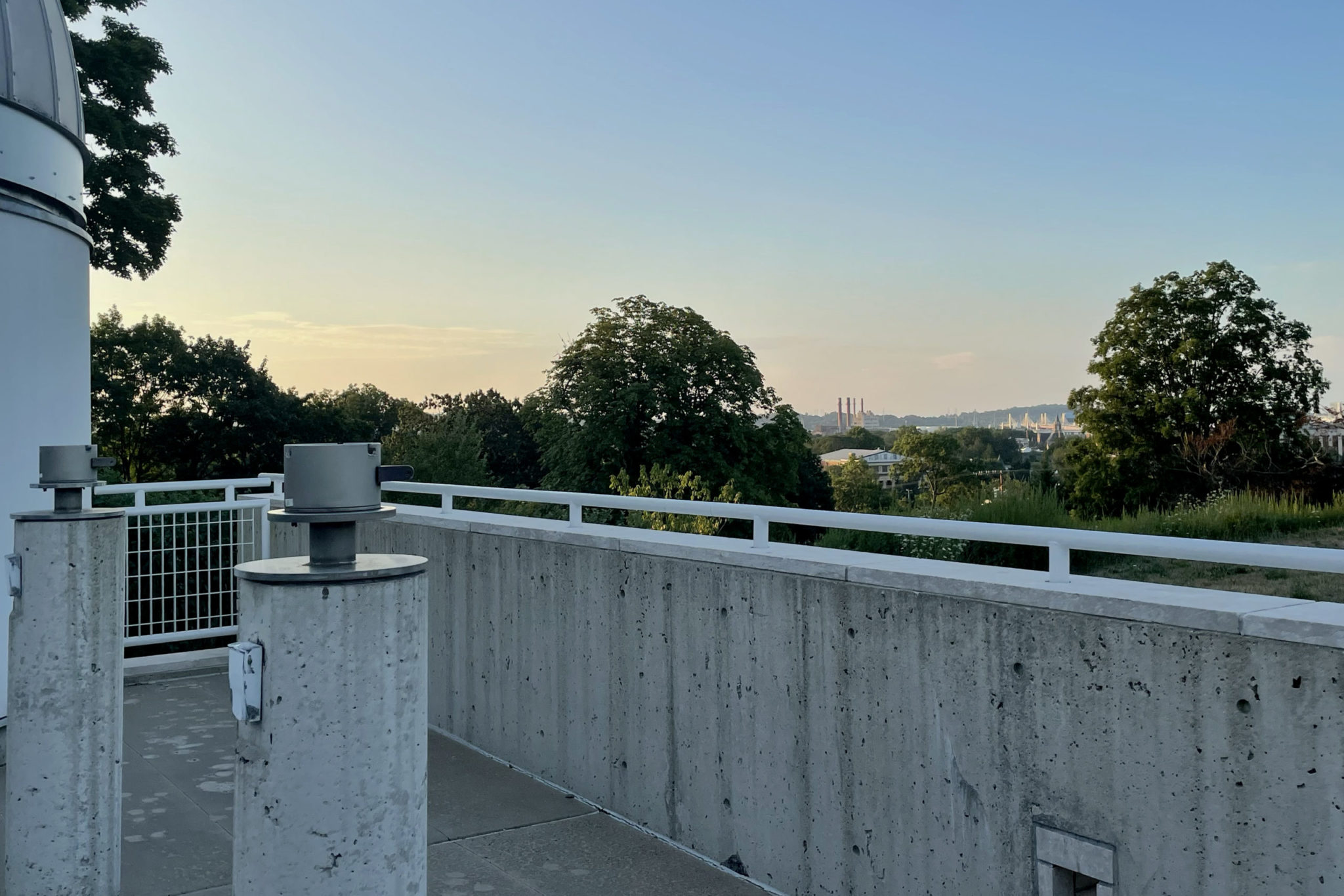Yale observatory hosts viewing of brightest Jupiter in six decades
The Leitner Family Observatory and Planetarium opened its doors to the public to watch Jupiter at its brightest point in the past 59 years.

Courtesy of Julia Levy
Yale’s Leitner Family Observatory and Planetarium hosted this semester’s first public observing night on Tuesday.
The viewing coincided with the brightest magnitude Jupiter has been seen in the past 59 years. Around 60 people came to look through the six-inch and eight-inch diameter telescopes to view targets such as Saturn and the double star Albireo, the second brightest star in the constellation Cygnus the Swan.
“I love getting questions and seeing people really interested in astronomy on public nights,” said Julia Levy ’25, an observing assistant at Leitner. “Asking people questions and socializing is truly the best part of the experience.”
Levy explained that her main job at the observatory during public nights consists of helping to set up the telescopes and focusing them on targets throughout the night. In addition to looking at Jupiter, she also set the telescopes up to look at the double star Albireo.
Jupiter was especially bright this week due to it being in opposition — meaning that it is opposite from the Sun in the sky — putting Earth directly between Jupiter and the Sun. This positioning in itself is not rare, occurring once every 399 days, according to Michael Faison, the director of Leitner Family Observatory and Planetarium.
The reason why Jupiter was the brightest this week since it has been in 1963, however, is because it was close to its perihelion point — when it is closest to the sun in orbit — making it slightly brighter than it otherwise would be when in opposition.
“It’s kind of like the supermoon,” Faison said. “It gets hyped up, but it doesn’t look that different than it usually does. It’s just that the full moon always looks amazing, and so when people make a point to go look at it, they are amazed.”
Faison runs and maintains the observatory and planetarium, as well as teaching classes there. He also runs two major outreach programs from it: the Tuesday public night viewings and the Yale Summer Program in Astrophysics for high school students. He noted that he is also hoping to launch a summer camp for middle school students in the New Haven area on astronomy and space science.
Faison said that he hoped to open the planetarium theater again this semester to the public and do public shows. The observatory and planetarium were both closed starting March 2020 due to the pandemic. Although the observatory reopened for public observation in 2021, the planetarium is still closed to the public.
He mentioned that he also plans to host special events like public lectures and movie nights in the observatory and planetarium, as well as work on a tutorial series for Github and Youtube on “Budget Astrophysics” where he will teach projects to the general public.
“Seeing Albireo in its full beauty and Jupiter’s four bright Galilean moons just absolutely consolidated my love of the subject,” said Robin Tsai ’26. “I wouldn’t fall short of calling it personally transformative.”
Unfortunately, Levy mentioned, Jupiter was somewhat hazy this week due to atmospheric disturbances and city lights. Moreover, the telescope wasn’t focused on just Jupiter, but also its four largest moons: Io, Europa, Ganymede and Callisto.
Levy said that originally the telescopes were focused on Saturn because it was low and bright — the optimal condition for viewing at the beginning of the night. However, she still said that this Tuesday “really was the best” she’s ever seen Jupiter.
The observatory will host public nights every Tuesday this semester from 8 to 9:30 p.m., weather permitting.







